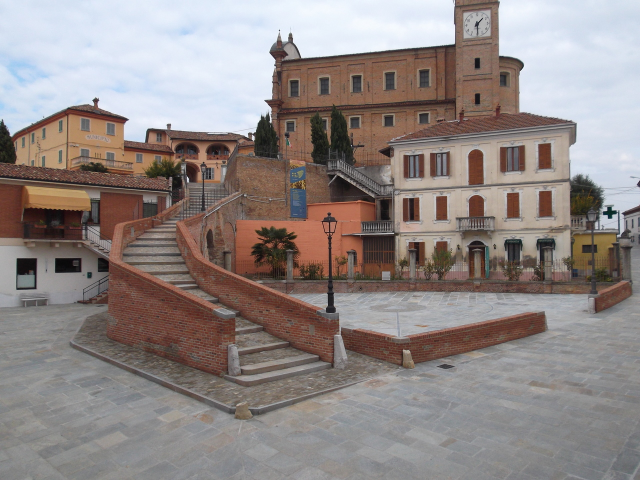Castelnuovo Calcea
Last update 30 January 2024
Castelnuovo Calcea, the “fiery” door of the Belbo Valley that was the birthplace of the nonconformist Brofferio
Landscape
Castelnuovo Calcea stands in a panoramic position in the Belbo Valley.
It is about 22 km from Asti, the provincial capital.
History
Of the town, which has very ancient origins, the first records are found in 1342.
The first inhabited settlements date back to the times of the dominion of Emperor Frederick Barbarossa.
Castelnuovo Calcea was first in the hands of the Astesi, then the Duchy of Milan.
Administration
Food and wine and typical products
The production of fine red wines of Piedmont (Barbera d'Asti, Barbera del Piemonte, and Grignolino d'Asti) is accompanied by typical local recipes.
To be seen
The parish church (with the nearby exhibition area where an ancient church bell is on display) stands next to the castle of medieval origin, on whose watchtower the splendid belvedere dedicated to Giuseppe Dagna was inaugurated.
The ascent to the castle and the town hall is via the staircase in Piazza Fondo Ponte.
Castelnuovo Calcea is also home to a museum dedicated to its most illustrious citizen, writer Angelo Brofferio, a prestigious art park, Cascina La Court — Michele Chiarlo, and a giant fuchsia-colored bench.
Insights
“Punti di Interesse”. Comune di Castelnuovo Calcea, www.comune.castelnuovocalcea.at.it/it/point-of-interests. Last accessed Jan. 22, 2024.
Curiosity
Castelnuovo Calcea is also known as the “burned castle” about the looting and burning, in 1634, by the captain of the Duke of Savoy, King Stefano.
Data source
- Synthesis / reprocessing information taken from the institutional website (current and previous versions) of the Municipality of Castelnuovo Calcea — https://www.comune.castelnuovocalcea.at.it
- Cover image source: Municipality of Castelnuovo Calcea — https://www.comune.castelnuovocalcea.at.it
Insights
BeWeb - Beni Ecclesiastici in WEB
https://beweb.chiesacattolica.it/
Catalogo Generale dei Beni Culturali
https://catalogo.beniculturali.it/
Centro Interuniversitario di Storia Territoriale "Goffredo Casalis"
https://www.archiviocasalis.it/
Ente Turismo Langhe Monferrato Roero
https://www.visitlmr.it
Wikipedia, l'enciclopedia libera.
https://it.wikipedia.org
- Castelnuovo Calcea
https://it.wikipedia.org/wiki/Castelnuovo_Calcea
See also
News from Castelnuovo Calcea
- Discover the latest news posted on the website of the Municipality of Castelnuovo Calcea
https://www.comune.castelnuovocalcea.at.it/it/news
Events in Castelnuovo Calcea
- Discover the events posted on the website of the Municipality of Castelnuovo Calcea
https://www.comune.castelnuovocalcea.at.it/it/events
Social network | Municipality of Castelnuovo Calcea
Follow your Municipality on social media:

